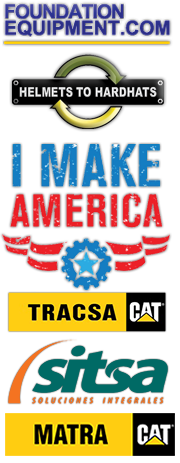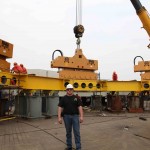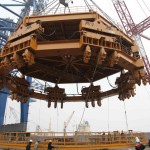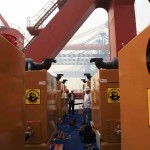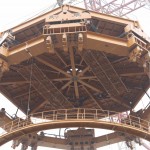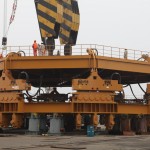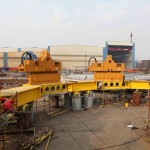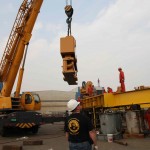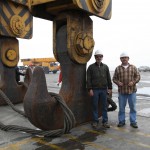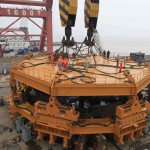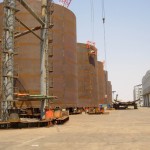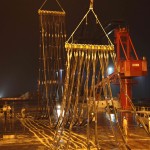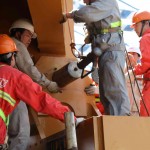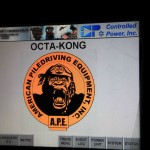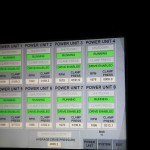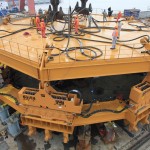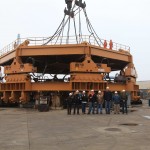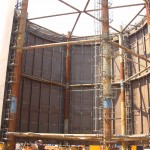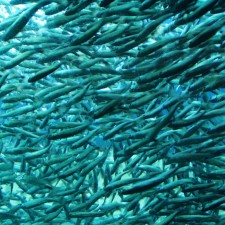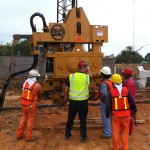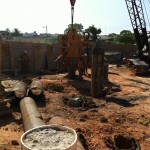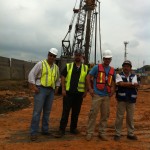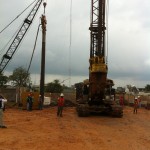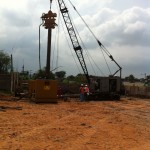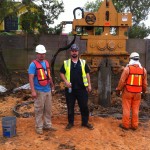When the Competition Says “They Can Do It”… Talk to Someone Who Has “DONE IT” Call APE!
The world’s largest vibratory pile driver is now complete. I want to send a personal thank you to everybody who helped make the Octakong a reality. From the engineering, machining, fabrication, purchasing, assembly, testing, packing, shipping, and re-assembly in China. All of APE China thanks you! I know that many of you worked many long hours to make the Octakong come to life and I want to let you know that you should be proud. The equipment to drive the world’s largest bridge piles will be done with American made equipment. I am proud of APE and all of our vendors for working so hard with us. First Harbor Marine Group of China, which is the largest marine based construction group in China, was very impressed with APE’s quality, professionalism, and speed in which we made these 8 hammers. With Chuck, Daniel, Jerry, Pavel, Mike, Yang, and Steve along side a team of 50 people were able to assemble the Octakong in 12 days. This was no easy task and the eyes of the pile driving world are upon us as we now await to drive our first test pile on May 5th 2011. If the 72 foot diameter (22 meter) pile can be driven successfully, then it will change the way many other projects around the world can be done. The Octakong will save nearly 2 years of time compared to using sheet piles.
An Evaluation of the Impacts of Specific Anthropogenic
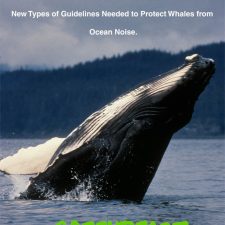
It is well established that certain anthropogenic noises have a severe effect on whales. Many sounds that humans introduce into the sea today are without precedent in the evolutionary history of marine mammals and other ocean life. Seismic testing associated with oil and gas exploration, military SONAR, and other industrial sources of ocean noise have injured or killed dolphins and whales in many instances. Additionally, behavioral impacts can also be severe, with animals interrupting feeding, nursing, or reproductive activity to flee from disruptive or painful sounds. There is also evidence that whales may be subject to “masking,” where some types of noises interfere with their ability to communicate with each other. As the military and industrial producers of these sounds are required by law in some countries to prevent impacts to marine mammals, there has been considerable debate and litigation in response to this continuing problem. Various mitigation schemes have been proposed, but they have not proven effective in eliminating harm to whales. Despite a wealth of information demonstrating the need to address multiple characteristics of sound, such as form, frequency, and periodicity, mitigation levels have thus far focused only on signal amplitude, or volume. Many of the studies have also been focused on physiological thresholds such as “threshold shift” using sinusoidal-derived signals which may not accurately reflect the types of anthropogenic noises to which whales are exposed.1,2 Mitigation levels based on these thresholds and signal types are often higher than known behavioral thresholds. It is clear from the literature that marine mammals avoid certain types of signals at significantly lower amplitudes than naturally occurring signals or other types, frequencies and forms of anthropogenic signals.
This paper presents data on signal-specific biological responses of cetaceans and calls for incorporation of signal types as well as decibel levels when establishing noise exposure criteria for whales. Given the existing evidence that cetaceans are adversely impacted by a range of noises far below current mitigation levels, a more precautionary approach is needed.
Michael Stocker
Interim Criteria for Injury of Fish Exposed to Pile Driving Operations
This paper presents science-based, interim noise exposure criteria for the onset of direct physical injury in fish exposed to the impact sound associated with pile driving. This paper provides an objective, scientific assessment of pile driving exposures which are injurious to fish. It does not explicitly consider policies of regulatory agencies which are based on mandated legal requirements and consequently result in the application of sometimes limited information for management decisions. The authors recognize that fish may respond to pile driving without experiencing injury, but the paper does not directly address behavioral responses of fishes or other sub-injurious auditory effects in setting interim criteria, largely due to the absence of underlying information.
The interim criteria presented here are based on the best science available at the time of writing. We have used professional judgment and, for the most part, the existing, peer-reviewed literature, to make conservative decisions where data are lacking, or present a range of options. That is, in the face of uncertainty criteria are set at exposures somewhat lower than the present peer-reviewed literature suggest may be the levels that would result in the onset of injury. A dual criteria approach is developed which includes an interim single-strike criterion for Sound Exposure Level (SEL) combined with an interim criterion for Peak Sound Pressure Level. Possible applications of SEL metrics to account for the accumulation of exposure energy across multiple exposures are discussed, although it is pointed out that the available data supporting multiple strike criteria are highly limited. The assumptions on which the criteria developed here are based are listed in an Appendix along with suggestions for the research that is needed to test the assumptions. Because of the high likelihood that this research will call for modifications of the interim criteria, the criteria presented must be clearly understood to be provisional and part of an iterative, self-correcting process that, along with policy guidelines, will continue to evolve for decades as new data become available.
Arthur N. Popper
Department of Biology, University of Maryland, College Park, MD 20742
Thomas J. Carlson
Pacific Northwest National Laboratory, Battelle Portland, MSIN: BPO, 620 SW 5th Avenue, Suite 810, Portland, OR 97204-1423
Anthony D. Hawkins
Loughine Ltd, Kincraig, Blairs, Aberdeen, AB12 5YT, United Kingdom
Brandon L. Southall
NOAA Ocean Acoustics Program, National Marine Fisheries Service, Office of Science and Technology, 1315 East West Hwy, SSMC III #12539, Silver Spring, MD 20910-6233
Roger L. Gentry
ProScience Consulting, LLC, Dickerson MD 20842
PDF Download Link: Interim Criteria for Injury of Fish Exposed to Pile Driving Operations
APE 150T Vibro Outdrives & Replaces PTC 30H2 in Mexico
Citemex was hired by Walmart to improve the soils for the first Walmart ever built in a small town called Macuspana in Tabasco, Mexico.
The objective was to improve the soils by injecting concrete into the ground with a 12 m long, 600 mm diameter injection pile in order to build a 25,000 sq foot Walmart, also called Bodega Aurrera in Mexico, in a 3 months length of time.
Walmart takes pride in building their Warehouses in 3 months or less time in Mexico, and due to the difficult driving conditions (SPT: 50 bpm) and low speed of Citemex’s vibratory hammer on site; they realized they would never meet Walmart’s schedule.
That’s when they called APE to come to the rescue.
Citemex had sent a PTC 30H2 with 30 kg*m eccentric moment and twice the weight of our APE 150T (also a 30 kg*m eccentric moment vibro), but the PTC could not even drive the piles to half the depth (6 m) even with pre-drilling.
So APE decided to send the APE 150T with our patented technology of tugsten on the eccentrics, a velocity of up to 1800 vpm, and an amplitud of up to 20 mm. The same eccentric moment hammer but with less weight, more speed, and more amplitude.
On the 1st day, the APE 150T drove (5) piles to depth. By the end of the 2nd day, Citemex drove (15) piles in a 12 hour shift.
From there on it was piece of cake…
Citemex finished their project in the expected time and now he is a loyal customer of APE.
You are probably wondering how can the same size vibro, relatively speaking, can outdrive the other one in the same soil conditions?
APE prides in developing equipment with technologies that go far beyond our customer’s expectations, and that is why APE is the Leader Manufacturer of Piledriving Equipment in the World.
For more information, please don’t hesitate to contact Franki Segura with your project specifications.
Like my good friend Steve Cress would say…Cheers! And till next time…






